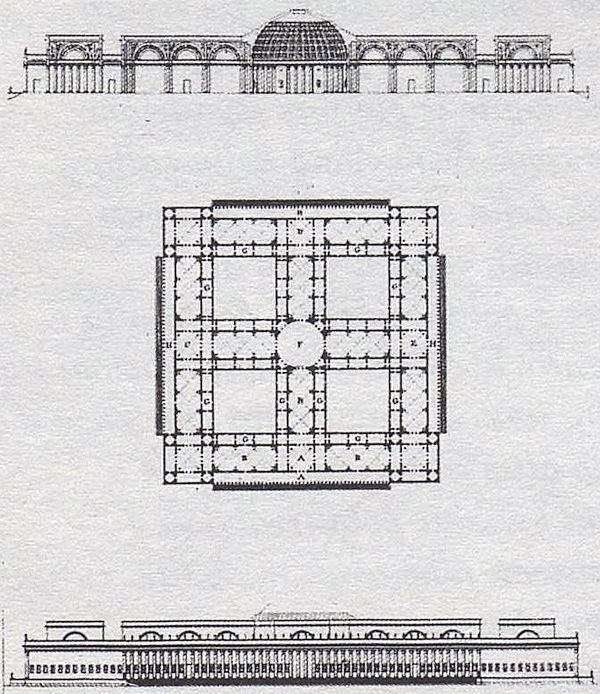4. "For a metropolitan museum", special issue of Hinterland, no. 4, July-Augusl 1978, and Proceedings of the symposium Milano e i suoi musei. Circolo della Stampa, Milan, March 17, 1979, in "La Diffusione museale", special issue of Hinterland, no. 21-22, March-June 1982.
5. "In Architecture: What will tomorrow's museums be like?" paper presented at the symposium E1 museu del futur, Museu de la Ciencia, Barcelona, May 16-17, 1989.
6. Building the New Museum proceedings of the symposium sponsored by The Architectural League of New York, December 5, 10 and 12, 1985, Princeton Architectural Press, New Haven 1986.
| |
In the introductory lessons to a course on museum design at Milan Polytechnic in the 1977-1978 academic year4, I myself attempted to trace the typological sequence, but in so doing came to certain conclusions which contradicted the linear and univocal inescapability of the model. As a result I turned my attention towards different cases which were often repeated and often found side by side and dependent on each other due to particular circumstances of time and place.
This is not the place to give an account of these or other contributions of mine on the subject, so I shall limit myself to quoting the conclusion of the paper I read at a 1989 symposium entitled The Museum of the Future.5
"(...) Some time ago I was interested to read the proceedings of a symposium held in December 1986 by the Architectural League of New
York entitled Building the New Museum.6 In the opening paper, entitled "The Development of a Museum Typology," Helen Searing takes the commendable step of declaring her own views on the subject from the outset: she is against universal solutions applied abstractly only because they are based on advanced technology but is in favour of the type of museum that established itself as the traditional model between the end of the eighteenth and the beginning of the nineteenth centuries, which started from Durand's design with a rotunda with four courtyards arranged in the shape of a cross around it offering a varied sequence of galleries, topped by a skylight to let in natural light.
However appropriate this museum-institution may prove to be to the historic fabric of a city--or rather of a capital--renowned for its civilization, as the speaker points out with a series of pointed considerations, the biggest objection to her assumptions as I see it is my suspicion that this architectural type and (generally speaking) museum design per se might survive, reassert itself and become widespread without taking certain contextual circumstances into account. It is almost as if that Durand- or Schinkel-inspired archetype had not established itself and had not over the years become more widespread and out of necessity modifžed, in the presence of certain social situations and ideologies and as if architectural design in the world's cities today could ignore the actual surroundings, tackling the typological question from inside the building approaching the solution as if it were a linear derivative of a series of rigorous operations
necessarily following one another.
Indeed for the very reason that it is possible to maintain--as I myself maintain--that architecture's role can only be the one it has always carried out, it is also true that each architectural category handed down to us by tradition undergoes, behind marginai figurative modifications, substantial and radicai transformations of use. Design is called upon not only to address these issues from inside the building but also on the outside, becoming a piece in a game of chess in which the landscape and the very appearance of the city are at stake.
| |

Jean-Nicolas-Louis Durand Museum 1817
|
